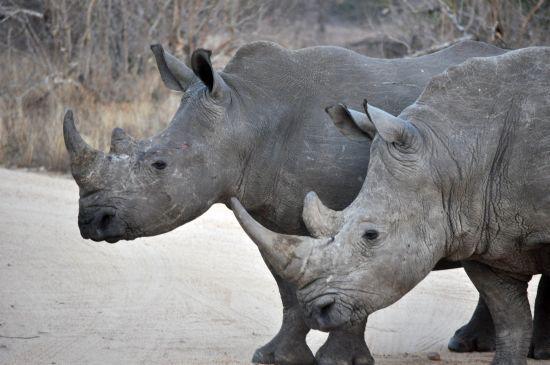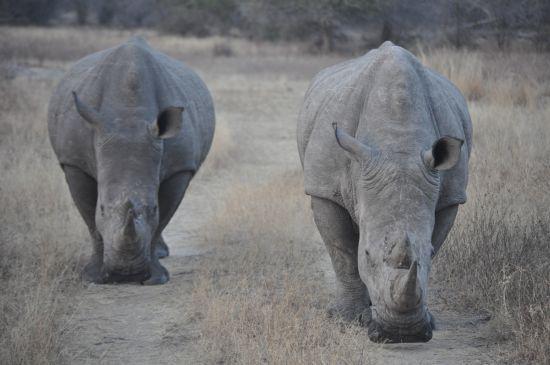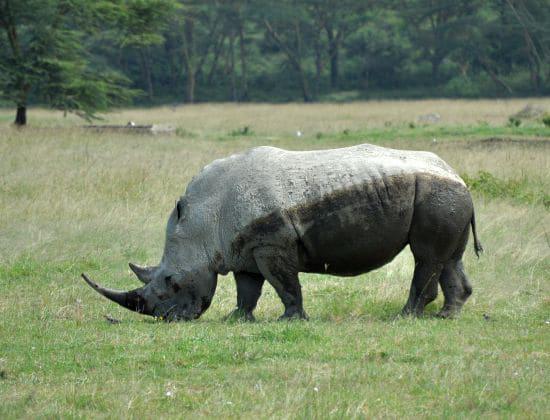When you start researching your African Safari, the term “Big 5″ often comes up. The term Big 5 was coined by big-game hunters and quickly became known as the most dangerous animals to hunt on foot, and the name stuck – although now ‘shooting’ is done through a camera lens. So the Big 5 are not called the Big 5 because of their size! The Big 5 are five of Africa’s greatest wild animals – lion, leopard, elephant, Cape buffalo and rhino.

As during the bygone hunting era the term “Big Five” still conjures up the romance and excitement of Africa’s exotic destinations and experiences. Images will begin playing in your mind: lions roaring; elephants trumpeting; buffaloes lurking in long grass; rhinos standing stately under a thorn tree; leopards prowling in the gathering darkness.
Many travellers regard a visit to Africa as incomplete without having spotted, and perhaps photographed, the Big Five – legends of the wilderness which have become synonymous with Africa. According to Wikipedia, Countries where all the members of the big five can be found include Botswana, Zambia, Uganda, Namibia, Ethiopia, South Africa, Kenya, Tanzania, Zimbabwe, Democratic Republic of the Congo, and Malawi.

Richard has compiled a list of facts about each of the Big 5 that he personally found fascinating whilst on safari in Africa. In this post Richard shares his favorite fast facts about Rhino’s – the second largest land mammal. Your first impression will be of its bulk and size. And then you may wonder how such a prehistoric-looking animal has existed for so many millions of years. Although unfortunately, the brutality and intensity of present-day poaching is a serious threat to the continuing survival of the species.
- There are two species of rhinoceros in Africa – the white and the black rhinoceros.
- The white rhinoceros primarily eats grass while the black rhinoceros eats leaves and the stems from bushes.
- The name for the white rhino is an odd tale. The original European colonizers into South Africa were the Dutch. The white rhino has a long, flat mouth good for clipping large swaths of grass. The black rhino has a narrower set of lips ideal for clipping the stems of bushes. The Dutch word for “wide” is “wijd”. The Dutch used the term “wijd” to describe the long, flat mouth and the English speaking immigrants misinterpreted this for the word “white”. The black rhino was simply named as the opposite of the misunderstood “wijd”.
- Rhino horn is not made of bone. It is make of keratin, the same material found in fingernails and hair.
- An adult rhino can produce as much as 50 lbs. of dung a day.
- Over 1,000 white rhinos were poached in South Africa in 2013. There is an ever growing demand for rhino horn in Asia. Asians believe the horn has medicinal qualities to cure cancer and improve virility. Rhino poaching has increased at such a rapid rate that the white and black rhino may be placed back on the Most Endangered List.
- An adult white rhino can weigh 4,500 lbs. and run up to 30 mph.
Richard has more than 12 years of personal travel in Africa, in addition to guiding and planning trips and itineraries for his clients. He has seen and experienced most of Southern and East Africa and is continuously staying up to date and researching the latest news, lodges, accommodation and travel logistics. If you need advice or a chat….. just ASK RICHARD!
Check out this video taken by Richard of Southern Sky Adventures of a Rhino Chase! This was the first time Richard had taken his mother on safari! What an epic first time experience! The rhino chased them for 3 kilometers. Africa…. In Your Wildest Dreams.
Southern Sky Adventures
Specializing in guided and self-drive trips through Southern and East Africa
Website: www.southernskyadventures.com
![]()
![]()
All images © Richard Pace -taken personally in Africa on safari.





